Museums & Galleries
Landmarks & Heritage
Entertainment & Lifestyle
Landmarks and Monuments
1. Historic Properties: Wander Halifax’s Restored 19th-Century Waterfront Warehouses & Cobblestone Streets

Nestled on the vibrant waterfront of Halifax, Nova Scotia, the Historic Properties hold a cherished space not only in the map of this lively city but also in the hearts of those who meander through its storied streets. This special quarter, which vividly echoes the maritime heritage of Halifax, provides an immersive walk through Canada’s rich history, painted against the backdrop of charming 18th-century architecture. It is a journey that beckons travelers to step back in time and experience the bustling days of sailors, privateers, and merchants whose lives were intricately tied to this historic port.
The journey through the ...
Museums and Art Galleries
2. Maritime Museum Of The Atlantic: Explore Halifax’s Historic Maritime Heritage Through Titanic Artifacts & Tall Ship Exhibits
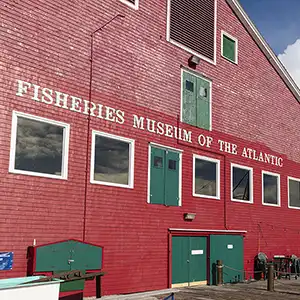
If you're captivated by the mysteries of the ocean, the tales of legendary ships, and the history of maritime exploration, then a visit to the Maritime Museum of the Atlantic in Halifax, Nova Scotia, should be at the top of your itinerary. Nestled in the heart of Halifax's historic waterfront, this museum stands as Canada's largest and oldest maritime museum, offering a deep dive into the rich seafaring heritage of the Atlantic coast. As a travel writer who has explored numerous maritime museums around the globe, I find the blend of personal narratives, meticulously preserved artifacts, and interactive exhibits here ...
3. Alexander Graham Bell National Historic Site: Tour The Inventor’s Cape Breton Laboratory & Interactive Communications Exhibits

The Alexander Graham Bell National Historic Site is an emblem of innovation and human curiosity, nestled in the picturesque landscape of Baddeck, Nova Scotia. This unique site pays homage to the life and work of Alexander Graham Bell, a brilliant inventor, scientist, and teacher best known for inventing the telephone. Yet, Bell's intellect and passion transcended far beyond this singular invention, touching the realms of aviation, hydrofoil technology, and even the early stages of the hearing aid. Exploring this historic site offers visitors a unique glimpse into the mind of a genius who forever changed the way we communicate.
Upon ...
4. Canadian Museum Of Immigration At Pier 21: Journey Through Canada’s Gateway For Over One Million Newcomers

The Canadian Museum of Immigration at Pier 21, nestled in the heart of Halifax, Nova Scotia, stands as a testament to Canada's rich tapestry of immigration history. This historic site, which operated as a gateway to Canada for one in five Canadians between 1928 and 1971, offers visitors an immersive journey through the stories and experiences that have shaped Canada's identity. As I stepped into the museum, the palpable sense of history and the stories of hope, hardship, and triumph that echo through its halls immediately captivated me.
One of the museum's most compelling features is its vast array of ...
Parks and Nature
5. Kejimkujik National Park And National Historic Site: Paddle Pristine Lakes & Discover Mi’kmaq Petroglyphs In Nova Scotia’s Wilderness
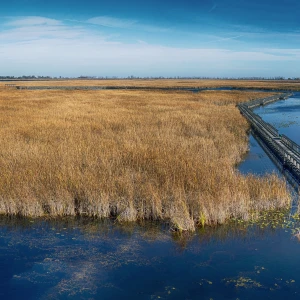
Nestled in the heart of Nova Scotia, Kejimkujik National Park and National Historic Site (often simply called 'Keji' by those who know it well) is a verdant oasis that offers both natural beauty and a deep dive into Canada's rich Indigenous and settler histories. This sprawling landscape serves as a living tapestry, woven with dense forests, sparkling lakes, and rivers that have been navigated by the Mi’kmaq people for thousands of years. Kejimkujik, designated as both a National Park and a National Historic Site, stands as a testament to the natural and cultural heritage of Nova Scotia, providing an unparalleled ...
6. Cape Breton Highlands National Park: Hike Rugged Highlands & Ocean Vistas Along The Cabot Trail

Perched grandly on the northernmost tip of Nova Scotia, Cape Breton Highlands National Park is a sanctuary where the Atlantic Ocean brushes against age-old mountains, creating a landscape so mesmerizing it seems to leap straight out of a painter's imagination. As an emblem of Canada's natural beauty, this park serves not just as a scenic masterpiece, but as a dynamic canvas that captures the essence of adventure and tranquility. For those yearning to immerse themselves in the breathtaking vistas and diverse ecosystems, Cape Breton Highlands is a testament to the raw, unfiltered beauty of the natural world.
Embarking on a ...
7. Halifax Public Gardens: Stroll Victorian Landscapes & Floral Splendor In The Heart Of The City

Embarking on a journey to Halifax, Nova Scotia reveals many charms, but the emerald heart of this vibrant city has to be the Halifax Public Gardens. Opened in 1867, the same year Canada became a nation, these Victorian-era gardens offer a verdant escape amidst the urban landscape. Spanning 16 acres, the Halifax Public Gardens is not just a green space but a living museum, a testament to meticulous landscape design and horticultural artistry that has been preserved and admired for over a century.
As you meander through the carefully curated paths, each twist and turn presents a tableau vivant of ...
8. Explore Kejimkujik National Park: A Sanctuary Of Nature And Indigenous Heritage

Kejimkujik National Park, often affectionately referred to as Keji, is a treasure within Nova Scotia that combines rich cultural heritage with vast ecological diversity. Located inland from the South Shore of Nova Scotia, this national park and national historic site boasts a unique blend of ancient landscapes characterized by lush forests and interconnected waterways. It is revered not only for its natural beauty but also as a testament to the area's Mi'kmaq ancestors, who navigated these lands and waters for thousands of years.
The park's landscape is diverse, featuring everything from granite ridges and hardwood forests to expansive wetlands. Kejimkujik ...
Historical Sites
9. Halifax Citadel National Historic Site: Explore An 18th-Century Star-Shaped Fortress Overlooking Halifax Harbour
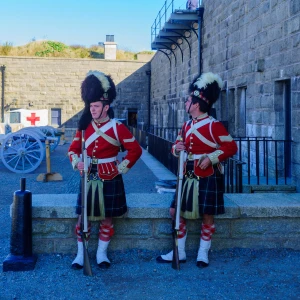
Perched on a hill overlooking the vibrant city of Halifax, Nova Scotia, the Halifax Citadel National Historic Site stands as a testament to Canada's military past. This iconic star-shaped fortress, with its strategic positioning and commanding presence, offers visitors a unique journey through time, back to when the fate of North America's Atlantic coast hung precariously in the balance. My visit to the Halifax Citadel was not just a step back into Canadian history, but an immersive experience into the life and times of the soldiers who once manned this formidable bastion.
As you approach the imposing walls of the ...
10. Cabot Trail: Drive Nova Scotia’s Spectacular Coastal Route Through The Cape Breton Highlands

Embarking on an adventure along the Cabot Trail is akin to stepping into a nature-painted canvas that unfurls along the rugged coastline of Cape Breton Island, Nova Scotia. This 298-kilometer loop is more than just a journey; it's an immersive experience that encapsulates the essence of Atlantic Canada's majestic landscapes and the vibrant communities that adorn its path. Winding through the Cape Breton Highlands National Park, the Cabot Trail offers travelers a symphony of crashing waves, soaring eagles, and landscapes that are a mosaic of colors, especially during the fall when the foliage presents an awe-inspiring palette of fiery hues. ...
11. Peggy’s Cove Lighthouse: Marvel At Nova Scotia’s Most-Photographed Beacon & Rugged Atlantic Shoreline

Nestled on the rugged, windswept coastline of Nova Scotia, the iconic Peggy's Cove lighthouse stands as a beacon of beauty, guiding ships safely to shore and inviting travelers from across the globe to bask in its picturesque charm. Known officially as Peggy's Point Lighthouse, this historic structure, painted in stark white with vibrant red trim, perches atop smooth wave-worn granite rocks at the village's edge. Since its establishment in 1915, the lighthouse has not only been a crucial navigational aid but also a symbol of the enduring spirit of maritime communities along Canada's Atlantic seaboard.
Visiting Peggy's Cove lighthouse offers ...
12. Fortress Of Louisbourg National Historic Site: Step Into North America’s Largest 18th-Century French Walled Town On Cape Breton’s Coast
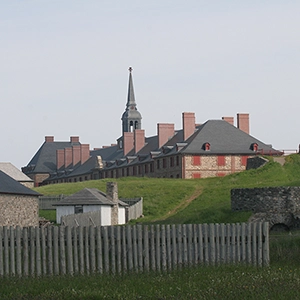
The Fortress of Louisbourg National Historic Site, situated on the rugged coast of Cape Breton Island in Nova Scotia, Canada, stands as a profound testament to colonial North America's complex history. This meticulously reconstructed 18th-century French fortress town not only offers a vivid glimpse into the past but also serves as a beacon of historical and cultural preservation. Here, the echoes of musket fire and the distant hum of period-specific folk songs fill the air, as reenactors and historians work tirelessly to bring the history of New France to life.
Upon stepping through the gates of the fortress, visitors find ...
13. Halls Harbour: Experience Nova Scotia’s Dramatic Bay Of Fundy Tides & Iconic Lobster Supper Tradition
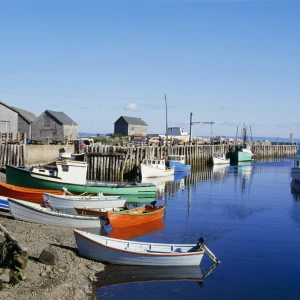
Perched eloquently on the rugged coastline of Nova Scotia, Halls Harbour embodies the quintessential Maritime experience, mingling rich sea-faring history with the natural beauty of the Bay of Fundy. This picturesque harbour, named after Samuel Hall, an American privateer who set up his base here during the American Revolution, is not just a haven for history buffs but also a retreat for those who seek the calmness of the sea and the adventurous tales of yesteryears. Whether you're tracing the footsteps of privateers or simply immersing in the stunning vistas, Halls Harbour offers a unique blend of historical intrigue and ...
14. Grand-Pré National Historic Site: Wander Verdant Dykelands & Honor Acadian Heritage At Nova Scotia’s Storied Plains

Nestled in the heart of Nova Scotia's picturesque Annapolis Valley, the Grand-Pré National Historic Site offers travelers a profound encounter with Canada's rich cultural tapestry and natural beauty. Recognized by UNESCO as a World Heritage Site, Grand-Pré serves as a living testament to the resilience of the Acadian people, whose remarkable story of deportation and survival is woven into the fabric of Canadian identity. Moreover, the site's breathtaking landscapes, characterized by sweeping tides and vibrant agricultural lands, make it a must-visit destination for those seeking a blend of historical depth and natural splendor.
Upon entering Grand-Pré, visitors are immediately transported ...
15. Cape Forchu Lighthouse: Explore Nova Scotia’s Dramatic Atlantic Beacon & Coastal Trails

Perched on a scenic rocky point at the entrance of Yarmouth Harbour, Cape Forchu Lighthouse stands as a majestic beacon, guiding sailors through the tumultuous waters of the Atlantic since its establishment in 1840. This iconic lighthouse, located just a short drive from Yarmouth, Nova Scotia, does not merely serve a vital navigational function; it also beckons travelers from around the globe to discover its captivating beauty and the surrounding landscape's rich tapestry of history and culture. With its distinctive “apple-core” shape—a result of a modern redesign in 1962—it's no wonder that Cape Forchu has been declared a site of ...
16. Visit The Fortress Of Louisbourg: Step Into North America’s Largest 18th-Century French Walled Town
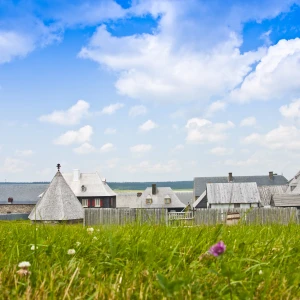
Stepping into the Fortress of Louisbourg is akin to opening a grand, ornate door into the past. Located on the rugged coast of Cape Breton Island, Nova Scotia, this historic site is not just a relic of the past but a vibrant reenactment of life in the 18th century. As one of North America's most significant and well-preserved fortifications, it offers an unparalleled glimpse into the complexities of colonial life, military strategy, and cultural exchange in the New World. The fortress’s significance lies not only in its meticulously restored buildings and defenses but also in the stories of its inhabitants, ...
Entertainment and Culture
17. Visit The Halifax Citadel Ghost Tours

Within the heart of Nova Scotia’s capital, the Halifax Citadel stands as a solemn reminder of the city's military past. By daylight, it’s a historic site, welcoming thousands of tourists eager to explore its ramparts, dungeons, and museums. However, as night falls, the Citadel transforms into a domain where the echoes of the past seem to blur the lines between history and the supernatural. The Halifax Citadel Ghost Tours offer a unique experience that's as spine-tingling as it is enlightening, making it a must-visit for anyone thrilled by the prospect of brushing shoulders with the spectral remnants of centuries gone ...
Food and Beverage Tasting
18. Wolfville Magic Winery Bus Tour: Sip Award-Winning VQA Wines Through Nova Scotia’s Scenic Annapolis Valley

Embark on a journey through the lush landscapes of Nova Scotia as you step aboard the Wolfville Magic Winery Bus Tour, a captivating experience that promises not just a voyage through stunning scenery, but an adventure through the flavors and stories of this rich wine country. This unique tour located in the Annapolis Valley, just an hour's drive from Halifax, offers an unforgettable day out exploring some of the region's most distinguished wineries aboard a classic British double-decker bus. It's an excursion that appeals to both the connoisseur and curious traveler alike, providing an intimate peek into the world of ...
19. Glenora Distillery: Discover North America’s Oldest Single Malt Whisky In Scenic Cape Breton Highlands

Nestled on the picturesque shores of Cape Breton Island, Nova Scotia, the Glenora Distillery stands as a testament to the timeless art of whisky making. Since its establishment in 1990, this North American treasure has enthralled travelers with its unique blend of traditional Scottish techniques and Canadian flair. As a travel writer deeply immersed in the world of exquisite destinations, I find Glenora not just a distillery, but a beacon of cultural fusion, offering a deep dive into the rich tapestry of whisky production.
The experience at Glenora begins the moment you meander through the idyllic landscapes that encircle this ...











